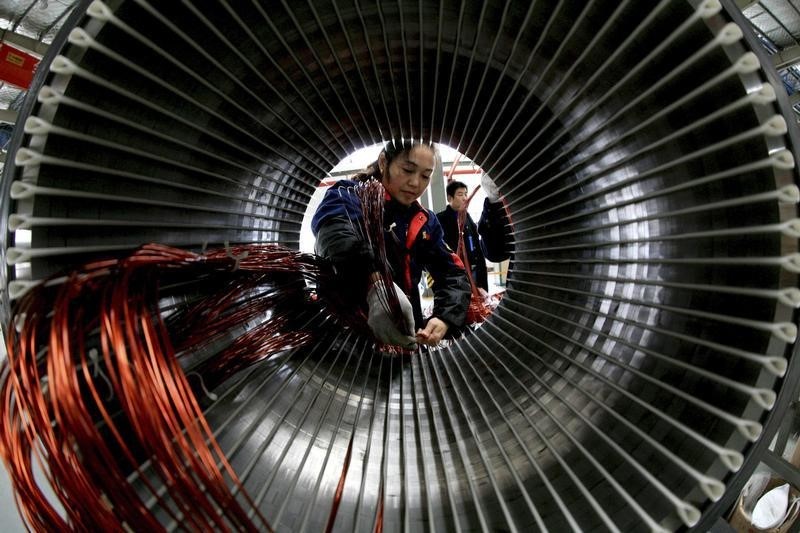Investing.com - Copper futures held near the prior session's seven-week high on Thursday, as weak China inflation data reinforced views that Beijing will roll out fresh support measures soon for the world's second largest economy.
Copper for December delivery on the Comex division of the New York Mercantile Exchange inched up 0.6 cents, or 0.26%, to trade at $2.443 a pound during morning hours in London.
Government data released earlier showed that Chinese producer prices fell by a more-than-expected 5.9% in August, the 42nd straight monthly decline and the worst reading since October 2009.
Consumer prices rose 2.0% last month, above expectations for 1.8% and up from 1.6% in July.
The soft inflation data added to speculation policymakers in Beijing will have to introduce further stimulus measures to boost growth.
Trade data on Tuesday revealed that China's imports shrank far more than expected in August, falling for the 10th straight month. A slowdown in domestic demand indicated a recovery in the broader economy remains fragile and may need further government stimulus.
The Asian nation is the world’s largest copper consumer, accounting for almost 40% of world consumption last year.
A day earlier, copper hit an intraday peak of $2.475, the most since July 21, before trimming gains to end at $2.436, up 0.2 cents, or 0.1%.
Copper prices have been boosted this week amid news of global production cuts. Swiss-based mining giant Glencore (LONDON:GLEN) said Monday that it was suspending operations at two copper mines for 18 months in a bid to lower operating costs.
The Katanga and Mopani mines are located in the Democratic Republic of the Congo and Zambia, respectively, and their suspensions will remove about 400,000 tonnes of copper from the market.
Copper prices have been under heavy selling pressure in recent months as fears of a China-led global economic slowdown spooked traders and rattled sentiment.
Prices of the red metal sank to a six-year low of $2.202 on August 24 as concerns over the health of China's economy and steep declines on Chinese stock markets dampened appetite for the red metal.
The turmoil in markets began when China unexpectedly devalued the yuan on August 11, sparking fears that the economy may be slowing at a faster than expected rate.
Elsewhere in metals trading, gold futures for December delivery tacked on $3.70, or 0.34%, to trade at $1,105.70 a troy ounce amid fears the Federal Reserve will increase interest rates when it meets on September 16-17.
Gold tumbled to $1,100.10 on Wednesday, a level not seen since August 11 after data showed that the number of job openings in the U.S. rose to the highest level on record in July.
The report boosted optimism over the health of the labor market and supported the case for a rate hike later this month. The timing of a Fed rate hike has been a constant source of debate in the markets in recent months.
Gold fell to a five-and-a-half year low of $1,072.30 on July 24 amid speculation the Fed will raise interest rates in September for the first time since 2006.
Expectations of higher borrowing rates going forward is considered bearish for gold, as the precious metal struggles to compete with yield-bearing assets when rates are on the rise.
